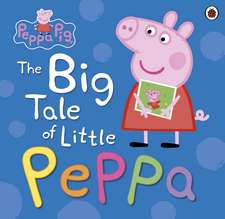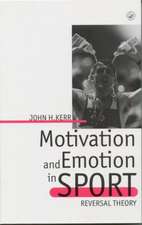Scorecasting
Autor Tobias J. Moskowitz, L. Jon Wertheimen Limba Engleză Paperback – 14 feb 2012
Drawing from Moskowitz's original research, as well as studies from fellow economists such as bestselling author Richard Thaler, the authors look at: the influence home-field advantage has on the outcomes of games in all sports and why it exists; the surprising truth about the universally accepted axiom that defense wins championships; the subtle biases that umpires exhibit in calling balls and strikes in key situations; the unintended consequences of referees' tendencies in every sport to "swallow the whistle," and more.
Among the insights that Scorecasting reveals:
- Why Tiger Woods is prone to the same mistake in high-pressure putting situations that you and I are
- Why professional teams routinely overvalue draft picks
- The myth of momentum or the "hot hand" in sports, and why so many fans, coaches, and broadcasters fervently subscribe to it
- Why NFL coaches rarely go for a first down on fourth-down situations--even when their reluctance to do so reduces their chances of winning.
From the Hardcover edition.
Preț: 87.74 lei
Nou
Puncte Express: 132
Preț estimativ în valută:
16.79€ • 17.49$ • 13.90£
16.79€ • 17.49$ • 13.90£
Carte disponibilă
Livrare economică 13-27 martie
Livrare express 27 februarie-05 martie pentru 18.40 lei
Preluare comenzi: 021 569.72.76
Specificații
ISBN-13: 9780307591807
ISBN-10: 0307591808
Pagini: 278
Ilustrații: Illustrations
Dimensiuni: 130 x 201 x 18 mm
Greutate: 0.2 kg
Editura: Three Rivers Press (CA)
ISBN-10: 0307591808
Pagini: 278
Ilustrații: Illustrations
Dimensiuni: 130 x 201 x 18 mm
Greutate: 0.2 kg
Editura: Three Rivers Press (CA)
Recenzii
"The closest thing to Freakonomics I've seen since the original. A rare combination of terrific storytelling and unconventional thinking. I love this book..."
—Steven D. Levitt, Alvin H. Baum Professor of Economics, University of Chicago, and co-author of Freakonomics and SuperFreakonomics
"I love this book. If I told you why, the NBA would fine me again."
—Mark Cuban, owner of the Dallas Mavericks
“Scorecasting is both scholarly and entertaining, a rare double. It gets beyond the cliched narratives and tried-but-not-necessarily-true assumptions to reveal significant and fascinating truths about sports.”
—Bob Costas
"A counterintuitive, innovative, unexpected handbook for sports fans interested in the truths that underpin our favorite games. With their lively minds and prose, Moskowitz and Wertheim will change the way you think about and watch sports. Not just for stats nerds, Scorecasting enlightens and entertains. I wish I had thought of it!"
—Jeremy Schaap, ESPN reporter, Author of Cinderella Man.
"(Sports + numbers) x great writing = winning formula. A must read for all couch analysts."
—Richard Thaler, Professor of Behavioral Science and Economics, best-selling author of Nudge.
“Scorecasting will change the way you watch sports, but don’t start reading it during a game; you’re liable to get lost in it and miss the action. I’m not giving anything away because you’ll want to read exactly how they arrived at their conclusions."
—Allen Barra, NJ Star Ledger
“Like Moneyball and Soccernomics before it, Scorecasting crunches the numbers to challenge notions that have been codified into conventional sports wisdom.”
—Wired Magazine
“Freakonomics meets Moneyball”
—The Wall Street Journal
From the Hardcover edition.
—Steven D. Levitt, Alvin H. Baum Professor of Economics, University of Chicago, and co-author of Freakonomics and SuperFreakonomics
"I love this book. If I told you why, the NBA would fine me again."
—Mark Cuban, owner of the Dallas Mavericks
“Scorecasting is both scholarly and entertaining, a rare double. It gets beyond the cliched narratives and tried-but-not-necessarily-true assumptions to reveal significant and fascinating truths about sports.”
—Bob Costas
"A counterintuitive, innovative, unexpected handbook for sports fans interested in the truths that underpin our favorite games. With their lively minds and prose, Moskowitz and Wertheim will change the way you think about and watch sports. Not just for stats nerds, Scorecasting enlightens and entertains. I wish I had thought of it!"
—Jeremy Schaap, ESPN reporter, Author of Cinderella Man.
"(Sports + numbers) x great writing = winning formula. A must read for all couch analysts."
—Richard Thaler, Professor of Behavioral Science and Economics, best-selling author of Nudge.
“Scorecasting will change the way you watch sports, but don’t start reading it during a game; you’re liable to get lost in it and miss the action. I’m not giving anything away because you’ll want to read exactly how they arrived at their conclusions."
—Allen Barra, NJ Star Ledger
“Like Moneyball and Soccernomics before it, Scorecasting crunches the numbers to challenge notions that have been codified into conventional sports wisdom.”
—Wired Magazine
“Freakonomics meets Moneyball”
—The Wall Street Journal
From the Hardcover edition.
Notă biografică
TOBIAS MOSKOWITZ is the Fama Family Chaired Professor of Finance at the University of Chicago. He is the winner of the 2007 Fischer Black Prize, which honors the top finance scholar in the world under the age of 40.
L. JON WERTHEIM is a senior writer for Sports Illustrated, a recent Ferris Professor at Princeton, and the author of five books, including Strokes of Genius: Federer, Nadal, and the Greatest Match Ever Played.
For more information go to scorecasting.com
From the Hardcover edition.
L. JON WERTHEIM is a senior writer for Sports Illustrated, a recent Ferris Professor at Princeton, and the author of five books, including Strokes of Genius: Federer, Nadal, and the Greatest Match Ever Played.
For more information go to scorecasting.com
From the Hardcover edition.
Extras
THE CURSE OF THE NO. 1 DRAFT PICK
In 2004 Richard Thaler, a professor of behavioral economics at the University of Chicago, and Cade Massey at Yale were watching the NFL draft. With the first pick, the Chargers chose quarterback Eli Manning, the brother of perhaps the best quarterback in the league, Peyton Manning, and the son of longtime NFL quarterback Archie Manning. The Giants held the number four pick and were in the market for a premier quarterback as well. It was no secret they coveted Manning.
During the 15 minutes the Giants had to make their selection, they were ambushed with two very different options. Option 1 was to make a trade with San Diego in which the Giants would first draft Philip Rivers — considered the second best quarterback in the draft — and then swap him for Manning plus give up their third-round pick (number 65) that year as well as their first- and fifth-round picks in the 2005 draft. Option 2 was to trade down with the Cleveland Browns, who held the seventh pick and also wanted a quarterback. At number seven, the Giants probably would draft the consensus third best quarterback in the draft, Ben Roethlisberger. In exchange for moving down, the Giants would also receive from Cleveland their second round pick (number 37) that year.
The Giants chose the first option, which meant they effectively considered Manning to be worth more than Roethlisberger and four additional players.
To the two economists, however, this seemed like an extraordinarily steep price. But after collecting data from the NFL draft over the previous 13 years and looking at trades made on draft day as well as the compensation — salaries plus bonuses — paid to top picks, they found that the Manning trade was anything but unusual. As a matter of routine, if not rule, teams paid huge prices in terms of current and future picks to move up in the draft. They also paid dearly for contracts with those players.
Not only did Manning cost the Giants four other players — one of whom turned out to be All Pro linebacker Shawne Merriman — but he was also given a six-year, $54-million contract. Compare this to Roethlisberger’s compensation. Ultimately drafted 11th by the Steelers, he received $22.26 million over six years.
Thaler and Massey found that historically, the number one pick in the draft is paid about 80% — 80%! — more than the 11th pick on the initial contract. The economists also found that the inflated values teams were assigning to high picks were remarkably, if not unbelievably, consistent. No matter the circumstances or a team’s needs, teams routinely assigned the same value to the same pick.
Thaler and Massey compared the values teams placed on picks — either in terms of the picks and players they gave up or in terms of compensation — with the actual performance of the players. They then compared those numbers with the performance of the players given up to get those picks. For example, in the case of Manning, how did his performance over the next five years compare with that of Rivers plus the performances of the players chosen with the picks the Giants gave San Diego? Likewise, how did those numbers stack up against Ben Roethlisberger’s stats and those of the players the Giants could have had with the additional picks they would have received from Cleveland?
The economists looked at each player’s probability of making the roster, his number of starts, and his likelihood of making the Pro Bowl. They found that higher picks were better than lower picks on average and that first rounders on average post better numbers than second rounders, who in turn post better stats than third-round draft picks, and so on.
The problem was that they weren’t that much better. Even looking position by position, the top draft picks are overvalued. How much better is the first quarterback or receiver taken than the second or third quarterback or receiver? Not much. The researchers concluded the following:
• The probability that the first player drafted at a given position is better than the second player drafted at the same position is only 53%, that is, slightly better than a tie.
• The probability that the first player drafted at a position is better than the third player drafted at the same position is only 55%.
• The probability that the first player drafted at a position is better than the fourth player drafted at the same position is only 56%.
In other words, selecting the consensus top player at a specific position versus the consensus fourth best player at that position increases performance, measured by the number of starts, by only 6%. And even this is understating the case, since the number one pick is afforded more chances/more starts simply because the team has invested so much money in him. Yet teams will end up paying, in terms of both players and dollars, as much as four or five times more to get that first player relative to the fourth player. Was Manning really 50% better than Rivers and twice as good as Roethlisberger? You’d be hard put to convince anyone that Manning is appreciably more valuable than Rivers or Roethlisberger; in any event, he’s certainly not twice as valuable.
Yet this pattern persists year after year. Is having the top pick in the NFL draft such a stroke of good fortune? It’s essentially a coin flip, but not in the traditional sense. Heads, you win a dime; tails, you lose a quarter. Massey and Thaler go so far as to contend that once you factor in salary, the first pick in the entire draft is worth less than the first pick in the second round.
From the Hardcover edition.
In 2004 Richard Thaler, a professor of behavioral economics at the University of Chicago, and Cade Massey at Yale were watching the NFL draft. With the first pick, the Chargers chose quarterback Eli Manning, the brother of perhaps the best quarterback in the league, Peyton Manning, and the son of longtime NFL quarterback Archie Manning. The Giants held the number four pick and were in the market for a premier quarterback as well. It was no secret they coveted Manning.
During the 15 minutes the Giants had to make their selection, they were ambushed with two very different options. Option 1 was to make a trade with San Diego in which the Giants would first draft Philip Rivers — considered the second best quarterback in the draft — and then swap him for Manning plus give up their third-round pick (number 65) that year as well as their first- and fifth-round picks in the 2005 draft. Option 2 was to trade down with the Cleveland Browns, who held the seventh pick and also wanted a quarterback. At number seven, the Giants probably would draft the consensus third best quarterback in the draft, Ben Roethlisberger. In exchange for moving down, the Giants would also receive from Cleveland their second round pick (number 37) that year.
The Giants chose the first option, which meant they effectively considered Manning to be worth more than Roethlisberger and four additional players.
To the two economists, however, this seemed like an extraordinarily steep price. But after collecting data from the NFL draft over the previous 13 years and looking at trades made on draft day as well as the compensation — salaries plus bonuses — paid to top picks, they found that the Manning trade was anything but unusual. As a matter of routine, if not rule, teams paid huge prices in terms of current and future picks to move up in the draft. They also paid dearly for contracts with those players.
Not only did Manning cost the Giants four other players — one of whom turned out to be All Pro linebacker Shawne Merriman — but he was also given a six-year, $54-million contract. Compare this to Roethlisberger’s compensation. Ultimately drafted 11th by the Steelers, he received $22.26 million over six years.
Thaler and Massey found that historically, the number one pick in the draft is paid about 80% — 80%! — more than the 11th pick on the initial contract. The economists also found that the inflated values teams were assigning to high picks were remarkably, if not unbelievably, consistent. No matter the circumstances or a team’s needs, teams routinely assigned the same value to the same pick.
Thaler and Massey compared the values teams placed on picks — either in terms of the picks and players they gave up or in terms of compensation — with the actual performance of the players. They then compared those numbers with the performance of the players given up to get those picks. For example, in the case of Manning, how did his performance over the next five years compare with that of Rivers plus the performances of the players chosen with the picks the Giants gave San Diego? Likewise, how did those numbers stack up against Ben Roethlisberger’s stats and those of the players the Giants could have had with the additional picks they would have received from Cleveland?
The economists looked at each player’s probability of making the roster, his number of starts, and his likelihood of making the Pro Bowl. They found that higher picks were better than lower picks on average and that first rounders on average post better numbers than second rounders, who in turn post better stats than third-round draft picks, and so on.
The problem was that they weren’t that much better. Even looking position by position, the top draft picks are overvalued. How much better is the first quarterback or receiver taken than the second or third quarterback or receiver? Not much. The researchers concluded the following:
• The probability that the first player drafted at a given position is better than the second player drafted at the same position is only 53%, that is, slightly better than a tie.
• The probability that the first player drafted at a position is better than the third player drafted at the same position is only 55%.
• The probability that the first player drafted at a position is better than the fourth player drafted at the same position is only 56%.
In other words, selecting the consensus top player at a specific position versus the consensus fourth best player at that position increases performance, measured by the number of starts, by only 6%. And even this is understating the case, since the number one pick is afforded more chances/more starts simply because the team has invested so much money in him. Yet teams will end up paying, in terms of both players and dollars, as much as four or five times more to get that first player relative to the fourth player. Was Manning really 50% better than Rivers and twice as good as Roethlisberger? You’d be hard put to convince anyone that Manning is appreciably more valuable than Rivers or Roethlisberger; in any event, he’s certainly not twice as valuable.
Yet this pattern persists year after year. Is having the top pick in the NFL draft such a stroke of good fortune? It’s essentially a coin flip, but not in the traditional sense. Heads, you win a dime; tails, you lose a quarter. Massey and Thaler go so far as to contend that once you factor in salary, the first pick in the entire draft is worth less than the first pick in the second round.
From the Hardcover edition.
Descriere
University of Chicago behavioral economist Moskowitz teams up with veteran "Sports Illustrated" writer Wertheim to overturn some of the most cherished truisms of sports, and reveal the hidden forces that shape how basketball, baseball, football, and hockey games are played, won, and lost.
















